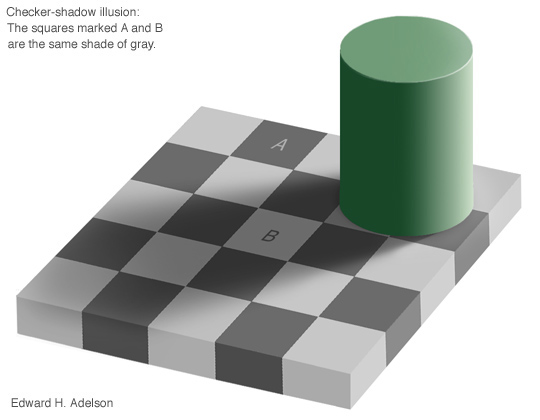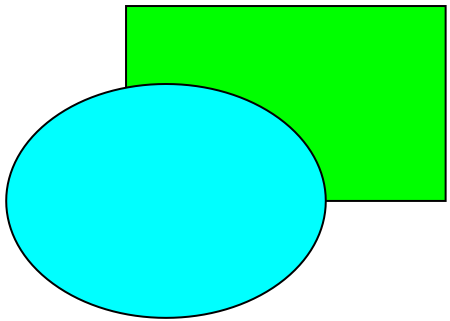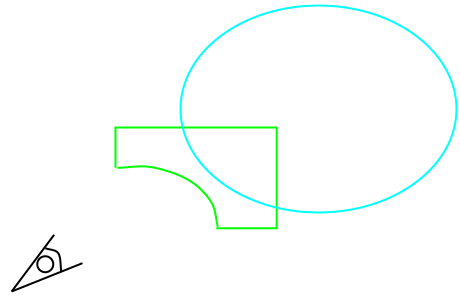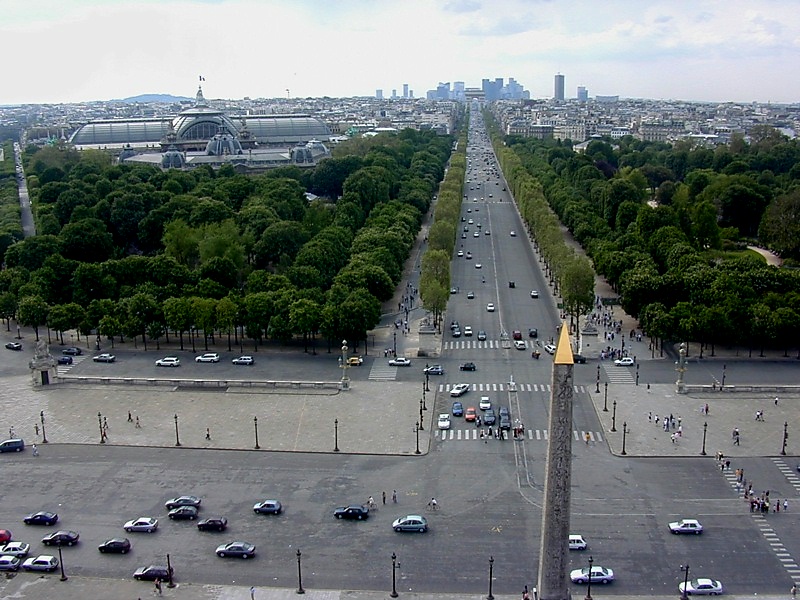eScience Lectures Notes : .
Virtual Reality : The Sight
Source of information for this chapter
Le traité de la réalité virtuelle
By Philippe Fuchs, Guillaume Moreau, Jean-Paul Papin
Préfacé par Alain Berthoz, Professeur au Collège de France
http://www.ensmp.fr/Fr/Services/PressesENSMP/Collections/ScMathInfor/Livres/TraiteRealiteVirtuelle.html
Optical Illusions

Optical Illusions (2)
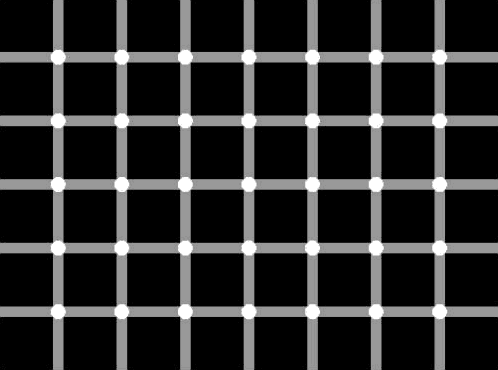
Count the black dots!
Source : http://www.sylloge.com/misc_bin/illusion.html
Optical Illusions (3)
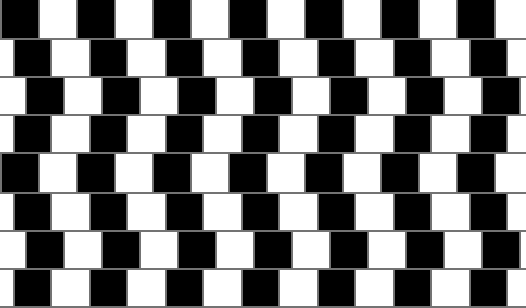
Are the horizontal lines parallel or do they slope?
Source : http://weirdillusion.tripod.com/illusion2.html
Optical Illusions (4)

How Many Legs Does The Elephant Have ?
Source : http://weirdillusion.tripod.com/illusion3.html
Optical Illusions (5)

Source :
Optical Illusions (6)
|
YELLOW BLUE ORANGE BLACK RED GREEN PURPLE YELLOW RED ORANGE GREEN BLACK BLUE RED PURPLE GREEN BLUE ORANGE Left-right conflict Your right brain tries to say the colour butyour left brain insists on reading the word. |
Source : http://giraffian.com/trivia/colours.shtml
Optical Illusions (7)
Is The Book Looking Towards You ... Or Away From You?

Source : http://www.annexed.net/box/escher/oi/tour5.html
Optical Illusions (8)
A light check in the shadow is the same gray as a dark check outside the shadow.
Source : http://www-bcs.mit.edu/people/adelson/checkershadow_illusion.html
Virtual Reality : The Sight
Technocentric Designer Diagram
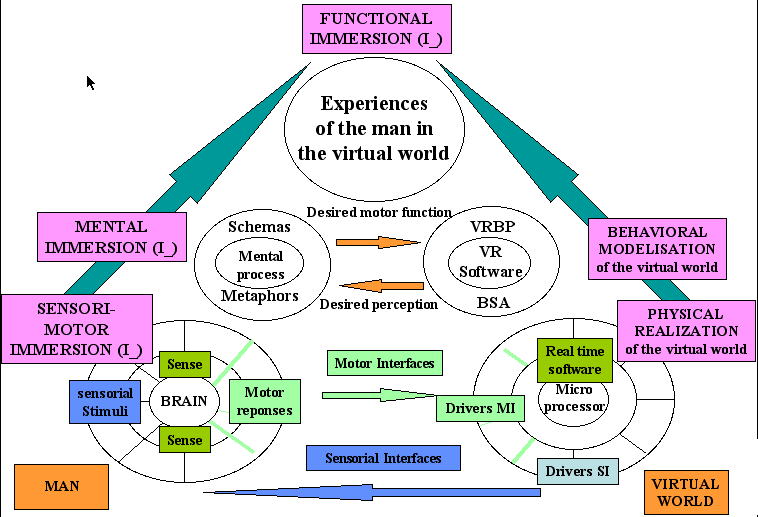
Our Visual System
Extract from http://cs.wpi.edu/~matt/courses/cs563/talks/brian1.html by Brian Lingard
We obtain most of our knowledge of the world around us
through our eyes. Our visual system processes information in two distinct ways
-- conscious and preconscious processing. When we are looking at a photograph,
or reading a book or map requires conscious visual processing and hence usually
requires some learned skill. Preconscious visual processing, however, describes
our basic ability to perceive light, color, form, depth and movement. Such processing
is more autonomous, and we are less aware that it is happening.
Physically our eyes are fairly complicated organs. Specialized cells form structures
which perform several functions -- the pupil acts as the aperture where muscles
control how much light passes, the crystalline lens performs focusing of light
by using muscles to change it's shape, and the retina is the workhorse converting
light into electrical impulses for processing by our brains. Our brain performs
visual processing by breaking down the neural information into smaller chunks
and passing it thoguh several filter neurons. Some of these neurons detect only
drastic changes in color, others neurons detect only vertical edges or horizontal
edges.
Depth information is conveyed in many different ways. Static depth cues include
interposition, brightness, size, linear perspective, and texture gradients.
Motion depth cues come from the effect of motion parallax, where objects which
are closer to the viewer appear to move more rapidly against the background
when the head is moved back and forth. Physiological depth cues convey information
in two distinct ways -- accommodation, which is how our eyes change their shape
when focusing on distant objects, and convergence, which is a measurement of
how far our eyes must turn inward when looking at objects closer than 20 feet.
We obtain stereoscopic cues by extracting relevant depth information by comparing
the left and right views coming each of our eyes.
Our sense of visual immersion in VR comes from several factors which include
field of view, frame refresh rate, and eye tracking. Limited field of view can
result in a tunnel vision feeling. Frame refresh rates must be high enough to
allow our eyes to blend together the individual frames into the illusion of
motion and limit the sense of latency between movements of the head and body
and regeneration of the scene. Eye tracking can solve the problem of someone
not looking where their head is oriented. Eye tracking can also help to reduce
computational load when rendering frames, since we could render in high resolution
only where the eyes are looking.
The sense of virtual immersion is usually achieved via some means of position
and orientation tracking. The most common means of tracking include optic, ultrasonic,
electromagnetic, and mechanical. All of these means have been used on various
head mouted display (HMD) devices. HMDs come in three basic varieties including
stereoscopic, monocular, and head coupled. The earliest stereoscopic HMD was
Ivan Sutherland's Sword of Damocles, which was built in 1968 while he was a
student at Harvard. It got its name from the large mechanical position sensing
arm which hung frm the ceiling and made the device ungainly to wear. NASA has
built several HMDs, chiefly using LCD displays which had poor resolution. The
University of North Carolina has also built several HMDs using such items as
LCD screens, magnifying optics and bicycle helmets. VPL Research's EyePhone
series were the first commercial HMDs. A good example of a monocular HMDs is
the Private Eye by Reflection Technologies of Waltham MA. This unit is just
1.2 x 1.3 x 3.5 inches and is suspended by a lightweight headband in front of
one eye. The wearer sees a 12-inch monitor floating in mid air about 2 feet
in front of them. The BOOM is head coupled HMD and was developed at NASA's Ames
Research Center. The BOOM uses two 2.5 inch CRTs mounted within a small black
box that has two hand grips on each side and is attached to end of articulated
counter-balanced arms serving as position sensing.
Anthropocentric User-Diagram
Virtual Reality : The Sight : Visual Interfacing
ImmersionInput |
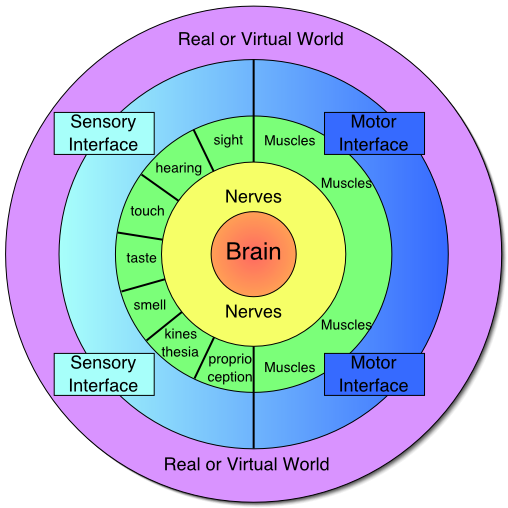 |
InteractivityOutput |
The Human Eye
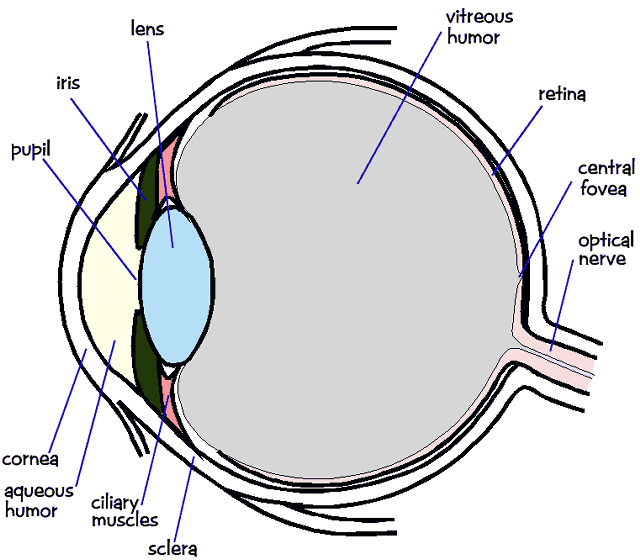
NB. : The eye : an analog-digital converter ...
When light get to cones and rods cells, it creates a electric potential. Above
a given level (sensitivity of the cell), a action potential is transmitted from
one nervous cell to another. Height and length of the action potential are constant,
only the frequency (number of potential) varies regarding the intensity of the
the stimulus (here the light).
At that level, we already may notice that two things may inform the human of the distance of an object : the contraction of ciliary muscles (focus), and the orbital muscle that position the orientation of the eye (stereoscopic view).
The eye is essentially an opaque eyeball filled with a water-like fluid. In the front of the eyeball is a transparent opening known as the cornea. The cornea is a thin membrane which has an index of refraction of approximately 1.38. The cornea has the dual purpose of protecting the eye and refracting light as it enters the eye. After light passes through the cornea, a portion of it passes through an opening known as the pupil. Rather than being an actual part of the eye's anatomy, the pupil is merely an opening. The pupil is the black portion in the middle of the eyeball. It's black appearance is attributed to the fact that the light which the pupil allows to enter the eye is absorbed on the retina (and elsewhere) and does not exit the eye. Thus, as you sight at another person's pupil opening, no light is exiting their pupil and coming to your eye; subsequently, the pupil appears black.
Like the aperture of a camera, the size of the pupil opening
can be adjusted by the dilation of the iris. The iris is the
colored part of the eye - being blue for some people and brown for others (and
so forth); it is a diaphragm which is capable of stretching and reducing the
size of the opening. In bright-light situations, the iris is dilated to reduce
the size of the pupil and limit the amount of light which enters the eye; and
in dim-light situations, the iris adjusts its size so as to maximize the size
of the pupil and increase the amount of light which enters the eye.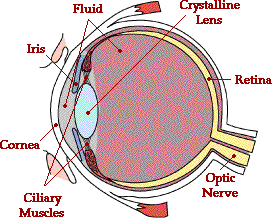
Light which passes through the pupil opening, will enter the crystalline lens. The crystalline lens is made of a fibrous, jelly-like material which has an index of refraction of 1.44. Unlike the lens on a camera, the lens of the eye is able to change its shape and thus serves to fine-tune the vision process. The lens is attached to the ciliary muscles. These muscles relax and contract in order to change the shape of the lens. By carefully adjusting the lenses shape, the ciliary muscles assist the eye in the critical task of producing an image on the back of the eyeball.
The inner surface of the eye is known as the retina. The retina contains the rods and cones which serve the task of detecting the intensity and the frequency of the incoming light. An adult eye is typically equipped with 120 million rods which detect the intensity of light and 6 million cones which detect the frequency of light. These rods and cones send nerve impulses to the brain. The nerve impulses travel through a network of nerve cells; there are as many as one-million neural pathways from the rods and cones to the brain. This network of nerve cells is bundled together to form the optic nerve on the very back of the eyeball.
Each part of the eye plays a distinct part in enabling humans to see. The ultimate goal of such an anatomy is to allow humans to focus images on the back of the retina.
Extract from http://www.physicsclassroom.com/Class/refrn/U14L6a.html
The Human Eye : Main Characteristics of the Sight
The Human Sight is a complex sens
Its characteristics varies depending on the surrouding light, connected sens input...
The Purview (Field of View), when eyes are motionless :
-
HOR : 90° (temple) + 45° (nose) = 135° (with only a 2° high resolution central cone)
-
VER : 45° (up) + 70° (down) = 115°
-
Binocular vision : 100°-120°
An eye can move 15° in all direction at 600°/s
The Purview , when head is motionless :
-
HOR : 170° for one eye (NB. 120° for very good HMD), 210° for both (~ 200°)
-
VER : 145°
The Purview , when head moving (for one eye) :
-
HOR : 200° (temple) + 130° (nose) = 330°
-
VER : 140° (up) + 170° (down) = 310°
An head can move at 800°/s
Visual Acuity : between 30” to 2’ of angle
The Human Eye : Main Characteristics of the Sight (2)
Total 15M pixels over the FOV of 4/3PI steradians, most dense in fovea. (about 1/3rd of a full sphere : 4PI steradian)
Visual Acuity : between 30” to 2’ of angle ... let's memorize 1'
Pixel resolution
|
|
1 ' : 0.1mn at 35 cm (0.0001/tan(1/60) = 0.34)
A screen at 35 cm, 25 cm, with a 40° FOV should have 2500 pixels (and not only 1024) !
Stereoscopique Acuity : around 0.1 milliradian : Delta r = 0.001 . r2 (in m)
-
1mm at a distance of 1 m
-
0.1 m at a distance of 10 m
Maximim perceptible frequency : 25-30 hz
It is easier to perceive a slight difference than an absolute value
-
Abslolute colour vs. comparaison of two colours
-
Perception of a distance vs comparaison of the depth of two close object (within the fov)
What we "look at" is not about a simple picture printed on the retina
Before 70 philosophical (Kant) duality/separation between perception and interpretation (eye/cortex)... now, more complex organisation, with specialised aera (frequency perception, color contraste, color and low resolution intensities, move and stereoscopic depth perception ...)
Average IPD (InterPupillary Distance) : 65 mm for adulte
(between 50 and 70mm for european population)
The center-to-center distance between an adult person's eyes averages. The binocular and of course HMD, should be capable of any setting between those two measurements.
What about Depth Perception ?
What about one-eyed ?
Depth Perception in monocular sight (1)
-
Light (Shading) and Shadows
Light (Shading) and Shadows
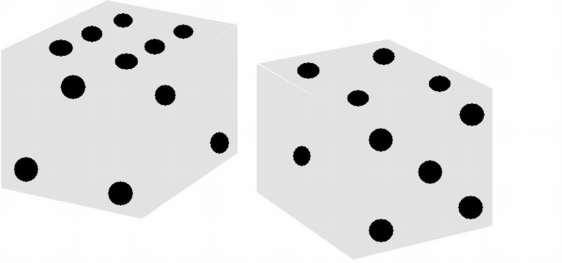
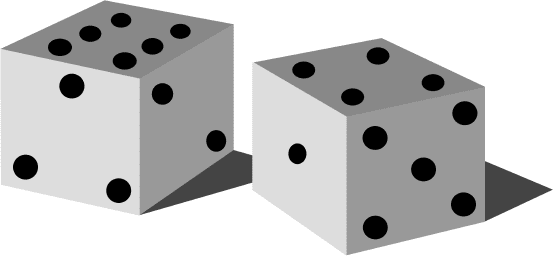
Shading gives information about the shape of an object, Shadows are a form of shading that indicate the positional relationship between two objects.
Depth Perception in monocular sight (2)
-
Light (Shading) and Shadows
-
Relative dimensions (and their cognition)
Relative dimensions (and their cognition)
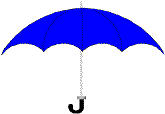 |
|||
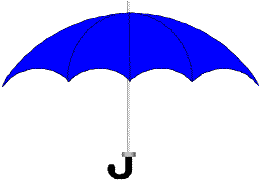 |
|||
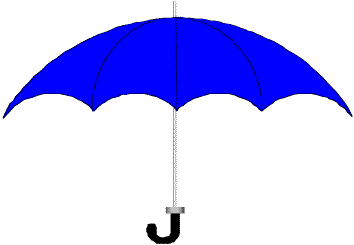 |
|||
We compare the Size of objects with respect to the other objects of the same type to determine the relative distance between objects (ie. the larger is presumed closer). We also compare the size of object with our memoy of similar objects to approximate how far away the object is from us.
Depth Perception in monocular sight (3)
-
Light (Shading) and Shadows
-
Relative dimensions (and their cognition)
-
Occlusions / Interposition
Occlusions / Interposition
Interposition is the clue we receive when one object occludes our view of another. If one object masks another, then it is probably closer.
Depth Perception in monocular sight (4)
-
Light (Shading) and Shadows
-
Relative dimensions (and their cognition)
-
Occlusions
-
Texture Gradient of a Surface
Texture Gradient of a Surface
Texture gradient is apparent because our retinas cannot discern as much detail of a texture at a distance as compared with up close.
When standing in a grassy field, the high details of the grass's texture at your feet changes to a blur of green in the distance
Depth Perception in monocular sight (5)
-
Light (Shading) and Shadows
-
Relative dimensions (and their cognition)
-
Occlusions / Interposition
-
Texture Gradient of a Surface
-
Atmospheric effects : Visibility Variation
(Fog effect in external scenes)
Atmospheric effects : Visibility Variation
(Fog effect in external scenes)
Depth Perception in monocular sight (6)
-
Light (Shading) and Shadows
-
Relative dimensions (and their cognition)
-
Occlusions / Interposition
-
Texture Gradient of a Surface
-
Atmospheric effects : Visibility Variation
-
Linear Perspective
Linear Perspective
Linear perspective is the observance that parallel lines converge at a single vanishing point. The use of this cue relies on the assumption that the object being viewed is constructed of parallel lines, such as most buildings and roads for instance.
Depth Perception in monocular sight (7)
-
Light (Shading) and Shadows
-
Relative dimensions (and their cognition)
-
Occlusions / Interposition
-
Texture Gradient of a Surface
-
Atmospheric effects : Visibility Variation
-
Linear Perspective
-
Height in Visual Field
derives from the fact that the horizon is higher in the visual field than the ground near our feet. Therefore, the further a object is from us, the higher it will appear in our view
Depth Perception in monocular sight (8)
-
Light (Shading) and Shadows
-
Relative dimensions (and their cognition)
-
Occlusions / Interposition
-
Texture Gradient of a Surface
-
Atmospheric effects : Visibility Variation
-
Linear Perspective
-
Height in Visual Field
-
Brightness
provides a moderate depth cue. Barring other information, brighter objects are perceived as being closer
Depth Perception in monocular sight
Monoscopic Image Depth Cues
-
Light (Shading) and Shadows
-
Relative dimensions (and their cognition)
-
Occlusions / Interposition
-
Texture Gradient of a Surface
-
Atmospheric effects : Visibility Variation
-
Linear Perspective
-
Height in Visual Field
-
Brightness
Motion depth cues : Parallax
Motion depth cues : Parallax : Relative move

Motion depth cues come from the parallax created by the changing relative position between the head and the object being observed (one or both may be in motion). Depth information is discerned from the fact that objects that are nearer to the eye will be perceived to move more quickly across the retina than more distant objects.
Move of the viewer body is more important than the move of the object because of the proprioceptic feedback telling them how far they moved. When viewers cannot determine the rate of the relative movement between themselves and the object, their judgment is less precise.
Even a slight rotation of the head allows you to use that sort of cue
Depth Perception
Monoscopic Image Depth Cues
- Light (Shading) and Shadows
- Relative dimensions (and their cognition)
- Occlusions / Interposition
- Texture Gradient of a Surface
- Atmospheric effects : Visibility Variation
- Linear Perspective
- Height in Visual Field
- Brightness
Motion depth cues : Parallax
Stereoscopic image depth cue (Binocular Vision)
Physiological depth cue
-
Accommodation (ciliary muscles, focus)
-
Convergence (orbital muscle) (Binocular Vision)
Accommodation

Accommodation to the infinity |
Accomodation to a short distance |
Accommodation is the focusing adjustment made by the eye to change the shape of its lens (contraction of ciliary muscles => variation of convergence / focal length of the crystalline lens). The amount of muscular change provide distance information for object within 2 or 3 m.
Convergence is the movement of the eyes to bring an object into the same location of the retina of each eyes. The orbital muscle movement used for convergence provide information to the brain on the distance of the object in view.
Convergence

Convergence is the movement of the eyes to bring an object into the same location of the retina of each eyes. The orbital muscle movement used for convergence provide information to the brain on the distance of the object in view.
Accommodation Vs. Convergence
The Brain has learnt that a relationship exist between Accommodation and Convergence
That relation is broken in stereoscopic VR system
We would need to know where the user is looking at to build a correct system
One othe the raison of VR sickness
(one that would implement dynamic variable focal length lens !)
Convergence and retinal disparity
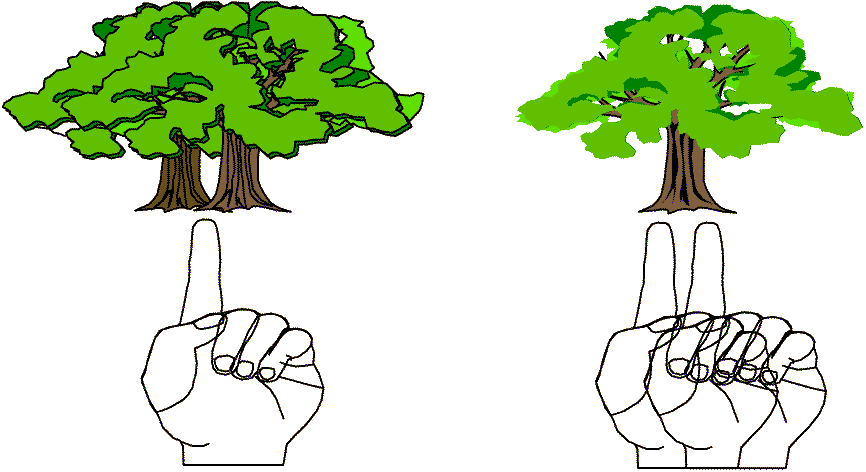
Your nose in not only in the middle of your face, but it is too, always, in the middle of your view
One of the 2 eyes is dominant
Retinal disparity : Stereopsis
Stereoscopic Image Depth Cue
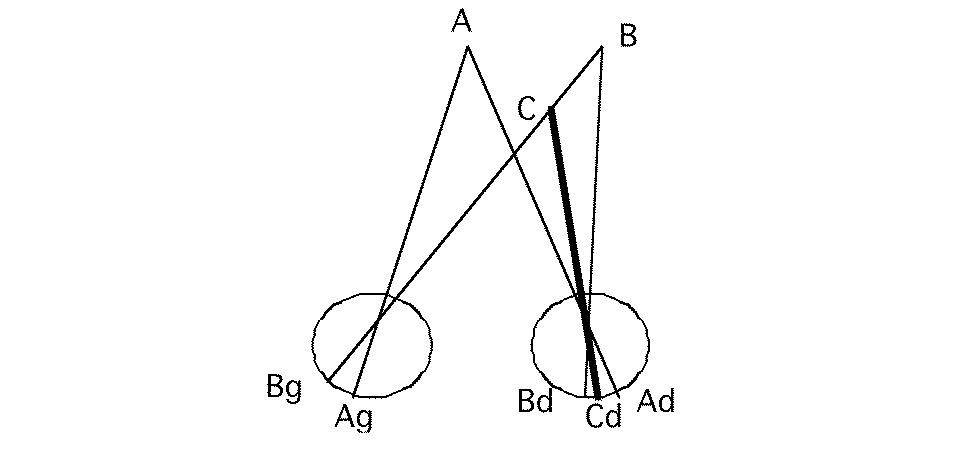
Stereopsis is derived from the parallax between the different images received by the retina in each eye (binocular disparity). The stereoscopic image depth cue depends on parallax, which is the apparent displacement of objects viewed from different locations. Stereospsis is particularly effective for objects within 5 m. It is especially useful when manipulating objects within arms reach
Thanks to VR, it is is now possible to manipulate very distant objects. But if we want to let that manipulation be easy to do, we need to virtually bring back objects within the stereostcopic area of our view !
Depth Perception : different importances od cues
Not all depth cues have the same priority. Stereopsis is a very strong depth clue. When in conflict with other depth cues, stereopsis is typically dominant.
Relative motion is perhaps the one depth cue that can be as strong or stronger than stereopsis.
Of the static monoscopic image depth cues, interposition is the strongest.
The physiological depth cues are perhaps the weakest. Accordingly, if one were to eliminate stereopsis by covering one eye, attempting to rely only on accomodation would be rather difficult.
Some depth cue are ineffective beyond a certain range. The range of stereopsis extends about 5m, and accomodation extends up to 3 m. So for more distant objects, theses cues have very low priority.
Monoscopic Image Depth Cues
- Light (Shading) and Shadows
- Relative dimensions (and their cognition)
- Occlusions / Interposition
- Texture Gradient of a Surface
- Atmospheric effects : Visibility Variation
- Linear Perspective
- Height in Visual Field
- Brightness
Motion depth cues : Parallax
Stereoscopic image depth cue (Binocular Vision)
Physiological depth cue
- Accommodation (ciliary muscles, focus)
- Convergence (orbital muscle) (Binocular Vision)
Cheap 3D
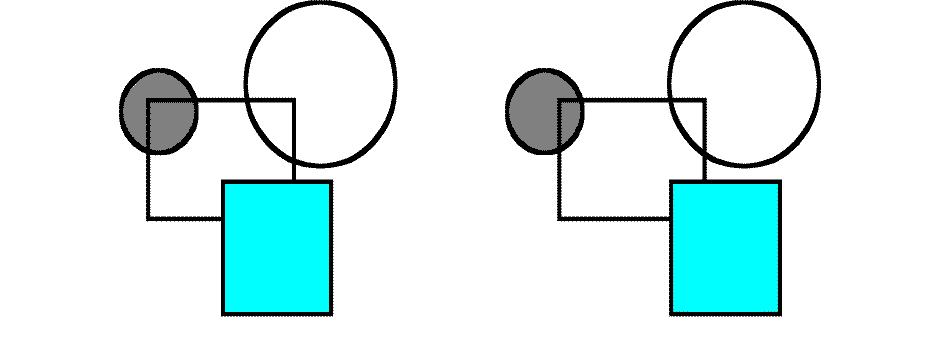
Autostereoscopic screen
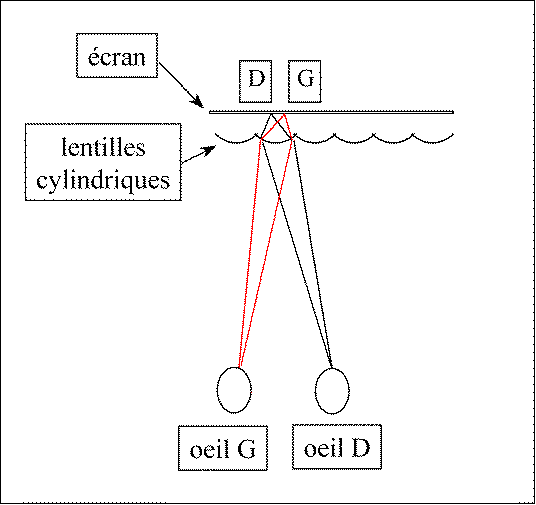
Stereoscopy : different options
HMD
Red/Bue
Shutter glasses
Polarized Glasses
Linear
Circular
Wavelength RGB
Ideal Visual Interface
A good Spatial Resolution (see accuity)
A large Field of View
A stereoscopic System
A large Field of Regard (FOR) : immersion of the regard
HMD : 100%
Ideal Visual Interface (2)
Other parameters to consider
Color (3, 2, 1 ...)
Contrast
Brightness
Focal Distance
Masking (by your body) Vs Body Immersion
Head Position Information
Temporal resolution / Graphics latency tolerance
Ideal Visual Interface (3)
Other things to consider
User Mobility
Interface with tracking method
Environment requirements
Associability with other sense displays
Portability
Throughtput
Encumbrance
Safety, hygiene
Cost
Taxonomy
Stationary Displays
Fishtank VR
Projection VR
Head Based Display
Occlusive HMDs
Nonocclusive HMDs
Hand Based Displays
PalmVR
See the CG part of Display devices
